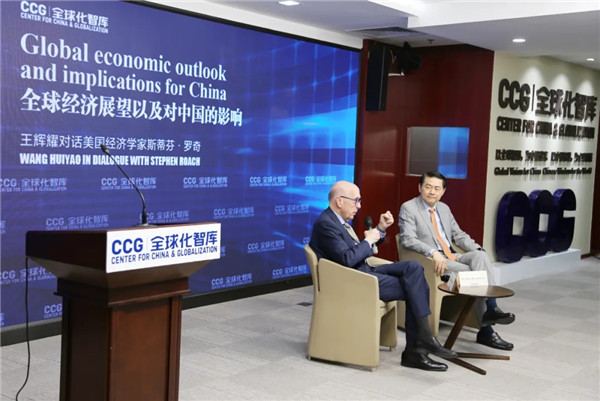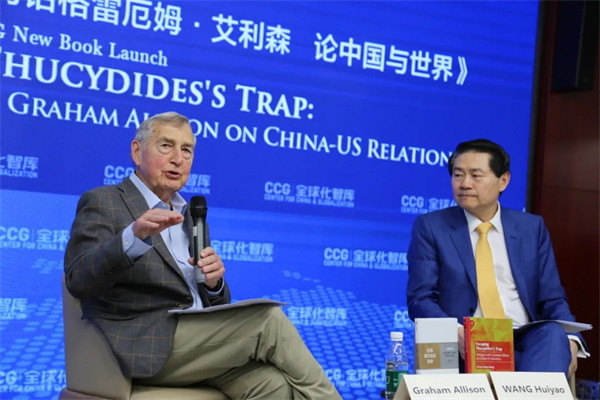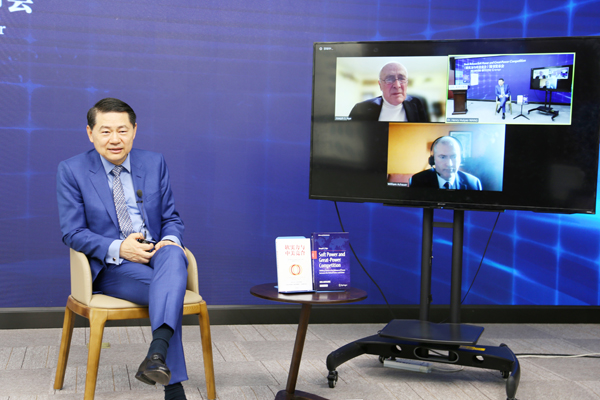Sino-Japanese-US relations and what the future holds for this crucial trilateral relationship
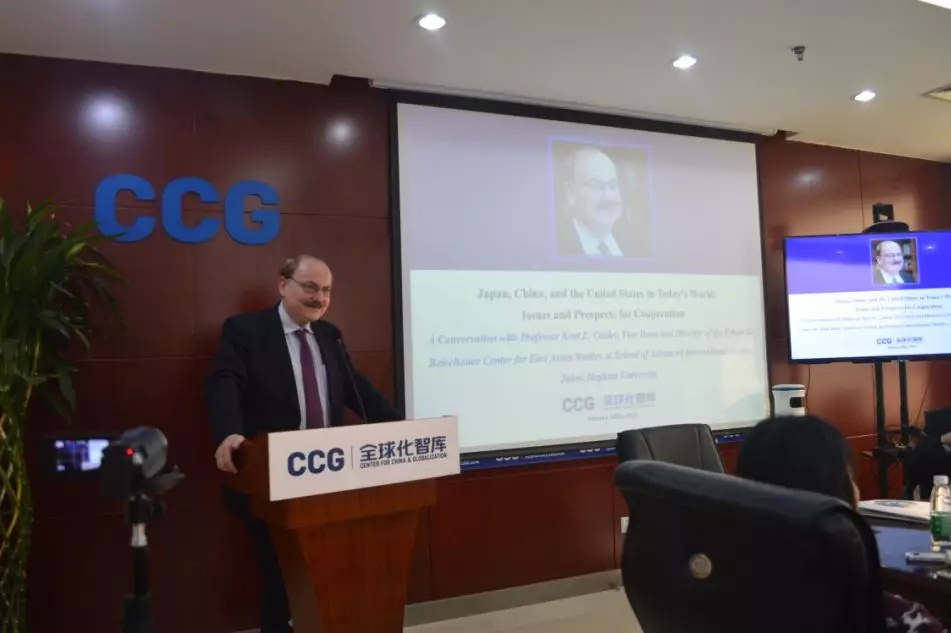
On the 14th of January, 2019, Professor Kent E. Calder, Vice Dean and Director of the Edwin O. Reischauer Center for East Asian Studies at School of Advanced International Studies, Johns Hopkins University, delivered a speech on the topic of “Japan, China, and the United States in Today’s World: Issues and Prospects for Cooperation” at the Center for China and Globalization (CCG) Beijing headquarters. The event was hosted by CCG Deputy Secretary General Ann Tang, and CCG President, Dr Wang Huiyao, who introduced the topic and the event’s speaker, Prof. Calder’s, as well as leading the Q&A at the end of the session. Also in attendance for this event, was Pierre van der Eng, Vice Professor at the Australian National University, Andy Mok, CCG fellow and CGTN technology and business commentator, Sehum Kim, Secretary of the Korean Embassy in China, Cai Xuejun, Deputy China Editor, South China Morning Post, Beijing, Sharon Xu, CCG Deputy Secretary General and Victor Nie, CCG Director of International Communications.
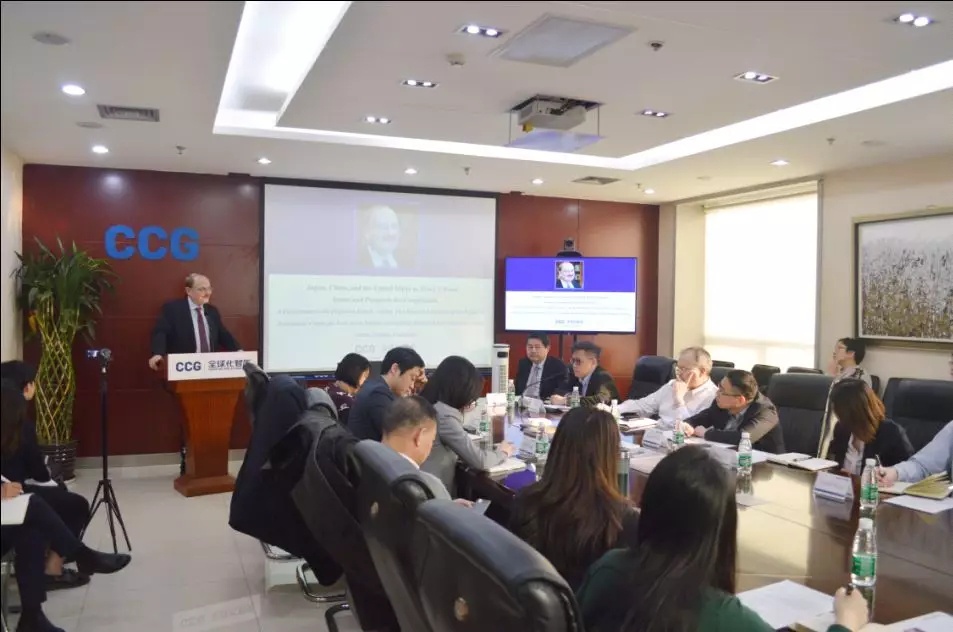
China and the US have just concluded their most recent round of vice-ministerial level trade talks in Beijing. The two sides sought to implement the important consensus reached by the two heads of the state in Buenos Aries of agreeing to keep in close contact and continue on with negotiations, a welcome relief in comparison to the trade frictions seen over the last year. In the 1980s, Japan experienced rapid economic growth, which also served to foment trade frictions with the US. The path that Japan took in solving the economic problems across the Pacific could be a useful reference for China’s circumstances today. Moreover, after the US exit of Trans-Pacific Partnership (TPP), Japan made the move to officially join and take a leading position in the Comprehensive Progressive Trans-Pacific Partnership (CPTPP) which came into effect on Dec. 30th, 2018. Japan has played an increasingly significant role in maintaining free trade and multilateralism by signing free trade agreements with a series of countries. It is with this backdrop, CCG invited Prof. Calder to share his opinion on the history, present situation and future of Sino-Japanese-US relations. By comparing and analyzing different historical periods, Prof. Calder provided valuable suggestions for future cooperation between the three countries.
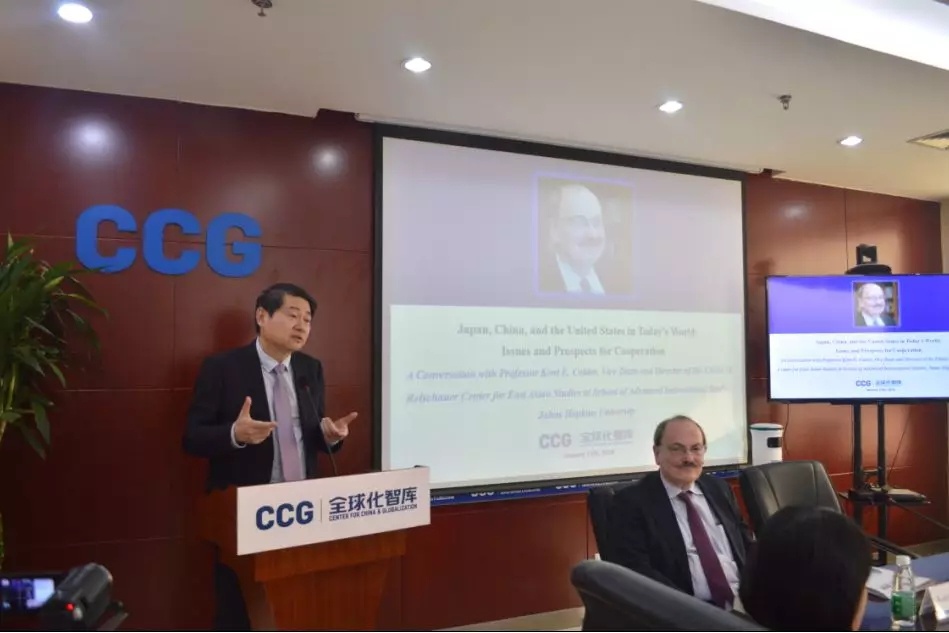
CCG President, Dr Wang Huiyao began by welcoming Prof. Calder, other guests and members of the media. Then he reviewed Sino-Japanese-US relations in the past, moving forward he detailed the ups and downs seen over 40 years since China’s Reform and Opening-up in 1979, contextualizing the trilateral relations and economic development of the trilateral relationship. After giving a brief introduction about Prof. Calder’s research and vast experience in East Asian political economy and international relations, Dr. Wang welcome Prof. Calder to share his insights into Sino-Japanese-US relations from an American perspective.
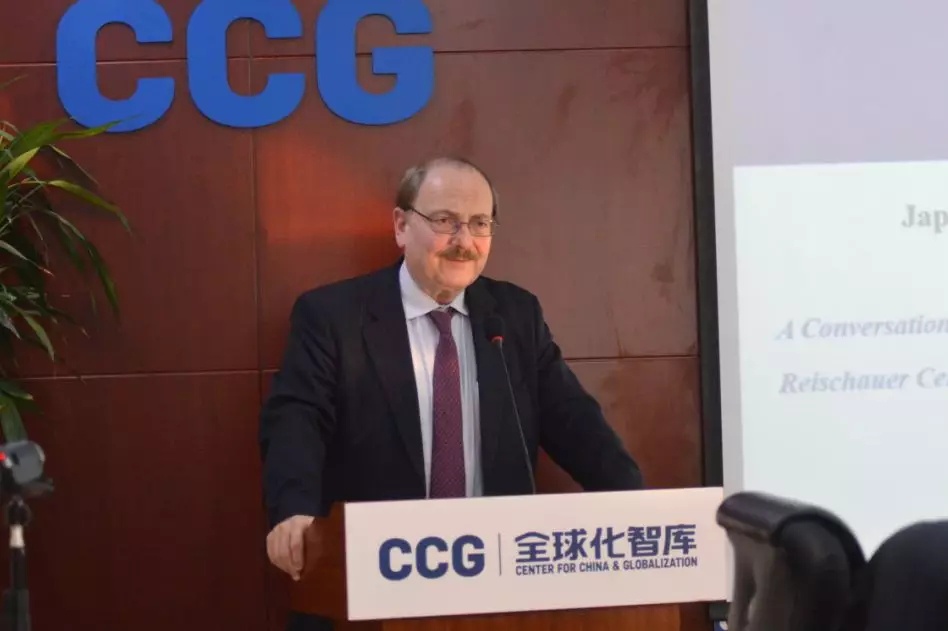
Prof. Calder began by introducing a new concept he has been working on recently – “global-political cities”. Professor Calder commented that with the acceleration of globalization and China’s increasing overall national strength, Beijing has the potential to become a global-political city like London, Washington D.C. . In this context, Prof. Calder spoke highly of the contribution CCG had made in the field of globalization.
Prof. Calder stated that past US-Japan trade disputes could have strategic implications on current US-China trade tensions. The US-Japan trade dispute in 1980s negatively impacted employment rates and industrial development in both countries, and altered Japan’s industrial structure. In response to these negative effects, Japan firstly made large purchases of Boeing aircraft from the US to ease the trade deficit. Secondly, Japanese then reevaluated its national economic distribution and conducted structural changes to increase its resilience to possible future crises. Thirdly, Japan made investments in US infrastructure projects, in addition to the already had large investments Japan had in the US, which served as a peaceful way to ease economic tensions between the two. Besides, Japan worked to always maintain dialogue and establish a structural negotiation process in solving the dispute. Prof. Calder pointed that China should open up its market widerly for foreign investors which could not only ease trade tensions but also benefit consumers and promote China’s globalization. He then went on to suggest that China should make large foreign purchases, keep negotiating with the US on trade issues and consider the potential of cooperation on infrastructure projects.
Regarding cooperation among China, Japan and the US, Prof. Calder said the biggest challenge was in technology, but there are chances for the cooperation on energy and environment. For Japan and China, Prof. Calder said there were many “windows of opportunity” for cooperation which could be made full use of, such as the 40th anniversary of Treaty of Peace and Friendship between Japan and China, the G20 in Osaka, the Tokyo Olympic in 2020, and the Beijing Winter Olympics in 2022. At present, there are some scholars in Japan pushing for the Japanese government to join the Asian Infrastructure Investment Bank (AIIB) initiated by China, which could open up AIIB-ADB cooperation on joint projects in the future.
Further commenting on China’s global governance and international engagement, Prof. Calder noted that the Belt and Road Initiative appeared to be an incredibly rational “Grand Strategy”; with potential for China and Japan to cooperate more on BRI, potentially via the Asia Africa Growth Corridor initiated by India and Japan.
In terms of the Sino-US trade dispute, Prof. Calder said China had an opportunity to seize the high-ground by joining CPTPP since China has benefitted massively from free trade and US might swing back open to multilateral trade. Continuing his speech, Prof. Calder claimed that 2019 would be a year of decision. China was becoming world’s largest economy which would soon need to face the reality that in the coming years it may need to rely on imports for food, energy, services, even technology. Therefore, it is crucial for China to respond to the trilateral relationship and its wider multilateral trading strategy based on its long-term national interests.
In response to a question on whether there would be a change in the dynamics of Sino-Japanese-US relations, Prof. Calder expressed that he didn’t think there was going to be a significant structural change any time soon. Objectively speaking, the US remains an attractive partner for Japan in terms of technology and energy cooperation. But if China continues its great progress in technology and economic development as well as sought closer ties with Japan, there was possibility for Japan to lean towards China in an effort to balance US power, the professor added.
Prof. Calder was modestly optimistic about the success of Sino-US trade talks. A potential consensus between the two could involve an expansion of US exports to China in areas such as aircraft and energy, with negotiations on structural reform continuing in certain areas, foreign investment for example, as has been proposed by China, suggested Prof. Calder.
